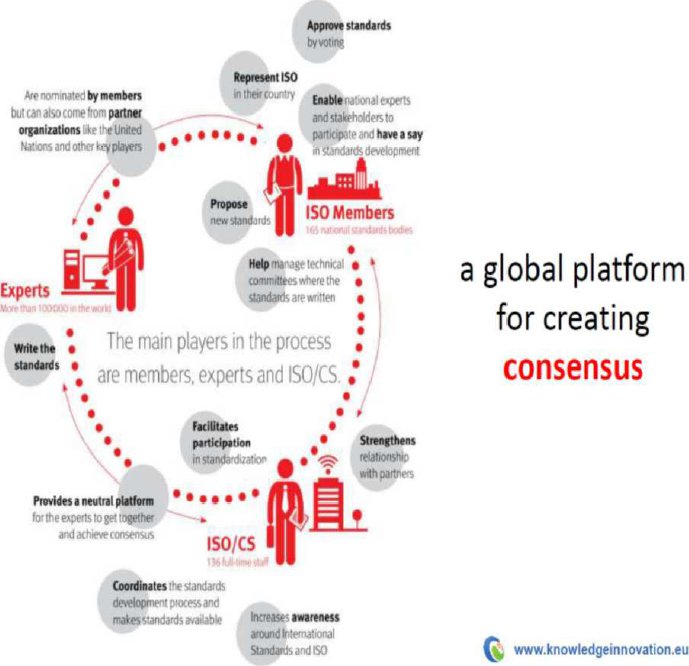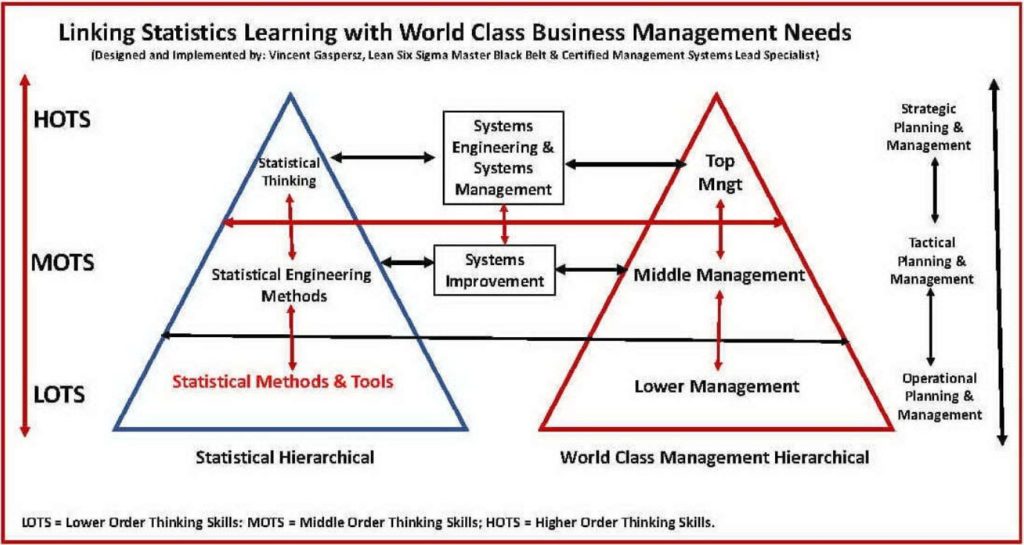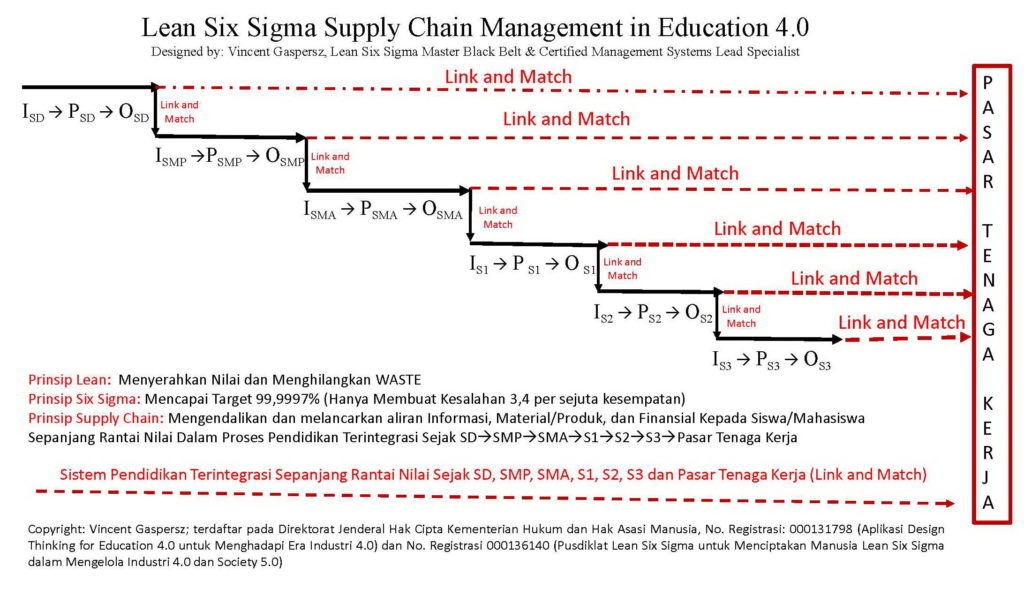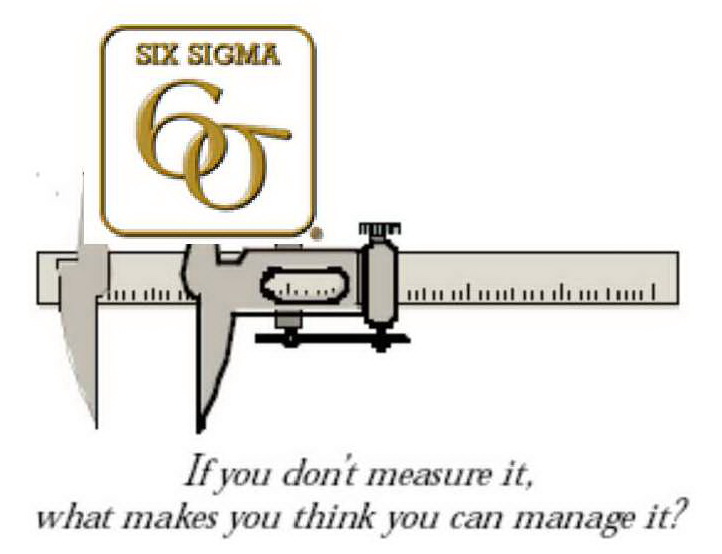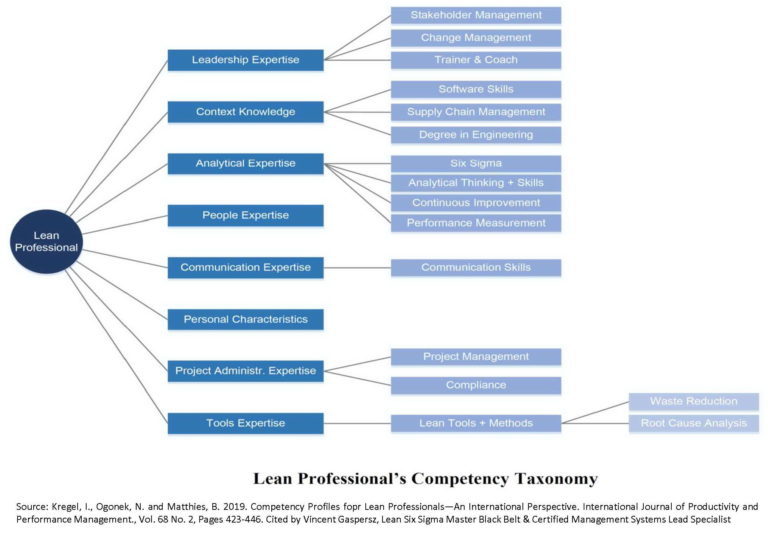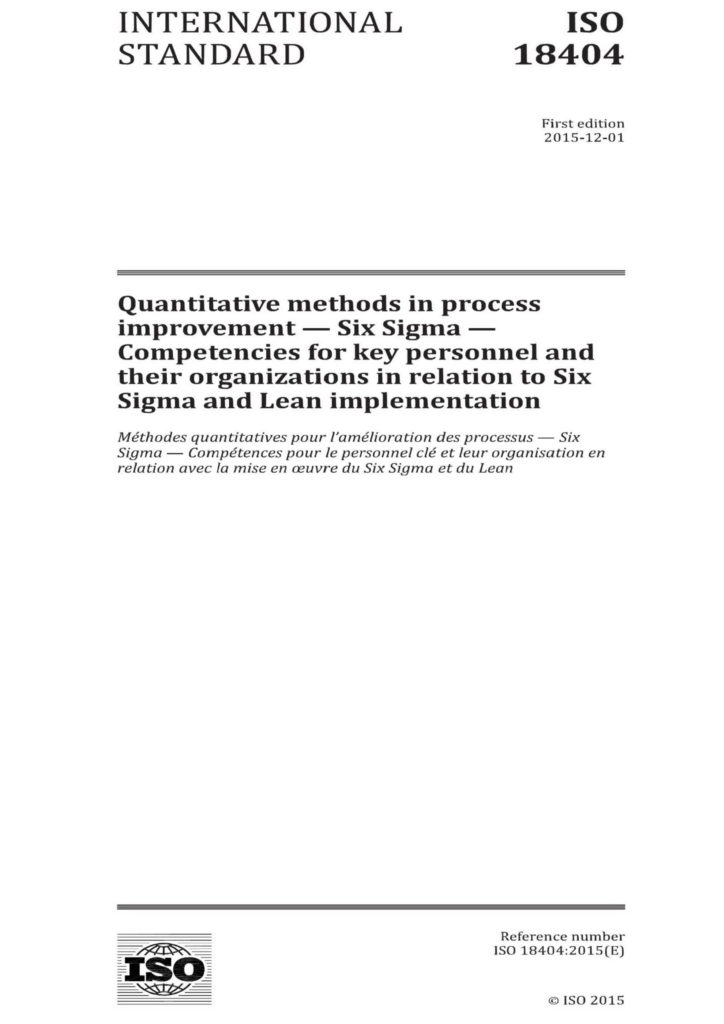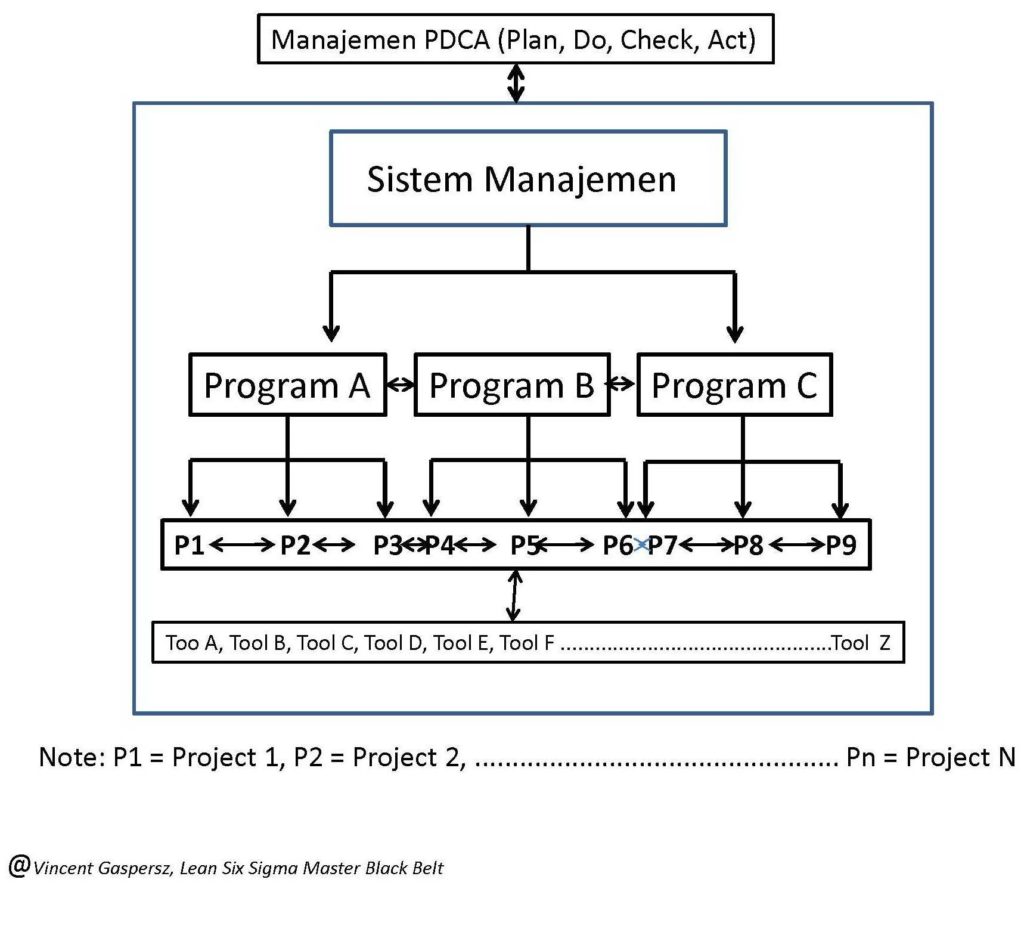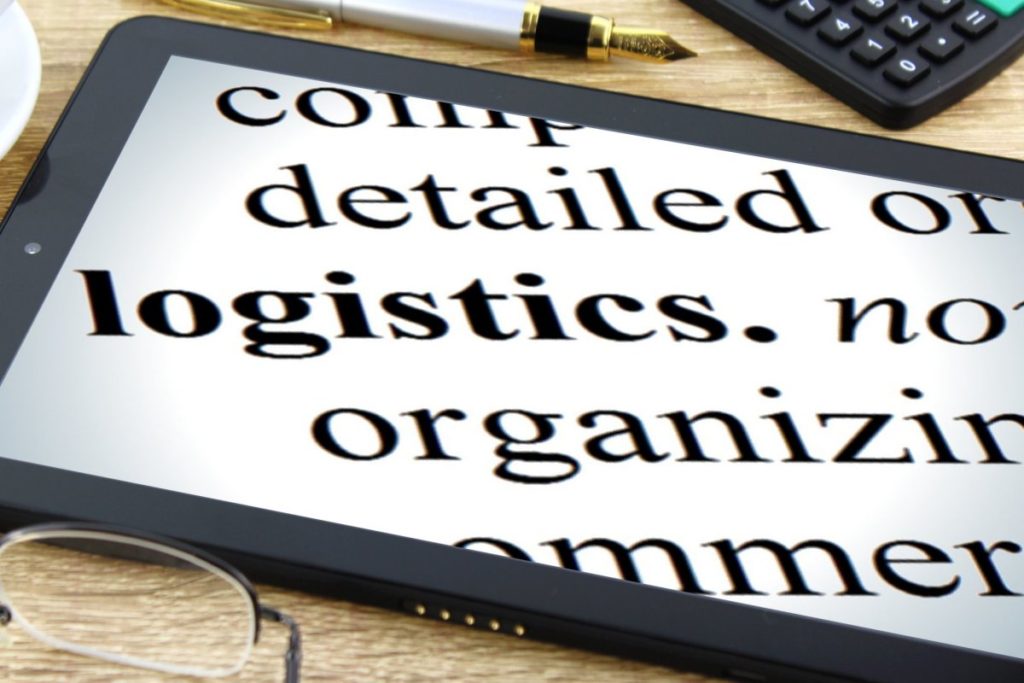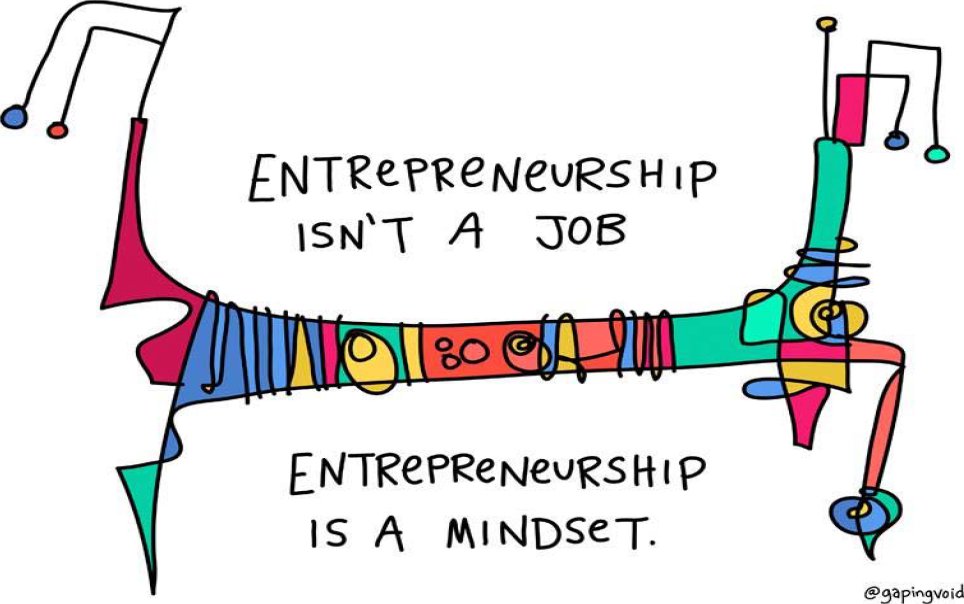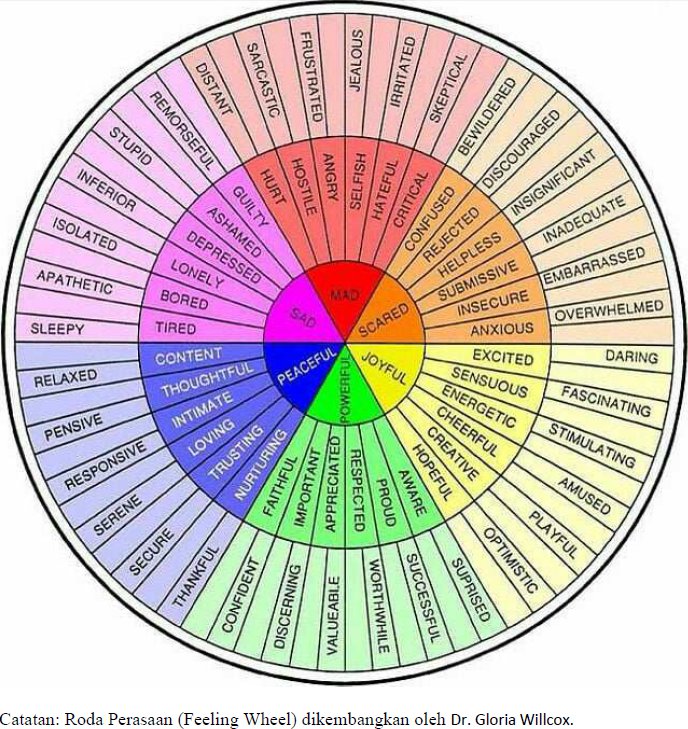-
Bahasa Indonesia
-
English
Oleh: Vincent Gaspersz, Lean Six Sigma Master Black Belt & Certified Management System Lead Specialist
- APICS (www.apics.org) Certified Fellow in Production and Inventory Management (CFPIM) and Certified Supply Chain Professional (CSCP);
- International Quality Federation (www.iqf.org) Six Sigma Master Black Belt (SSMBB);
- ASQ (www.asq.org) Certified Manager of Quality/Organizational Excellence (CMQ/OE), Certified Quality Engineer (CQE), Certified Quality Auditor (CQA), Certified Six Sigma Black Belt (CSSBB), Certified Quality Improvement Associate (CQIA);
- Registration Accreditation Board (www.exemplarglobal.org) Certified Management System Lead Specialist (CMSLS).
- Senior Member of American Society for Quality (Member #: 00749775), International Member of American Production and Inventory Control Society (Member #: 1023620), and Senior Member of Institute of Industrial and Systems Engineers (Member #: 880194630).
Selama ini bagi manajemen organisasi pendidikan yang ingin memperoleh sertifikasi internasional dari ISO, maka yang dijadikan referensi adalah Sistem Manajemen Kualitas ISO 9001. Kesulitan ketika organisasi pendidikan mengacu pada ISO 9001 adalah manajemen organisasi pendidikan itu harus menyesuaikan melalui beberapa modifikasi karena sesungguhnya Sistem Manajemen Kualitas ISO 9001 itu lebih banyak berkaitan dengan organisasi bisnis dan industri baik industri manufaktur maupun jasa.
Menghadapi kebutuhan organisasi pendidikan yang spesifik serta memiliki sistem manajemen yang berbeda dengan organisasi bisnis dan industri, maka lembaga ISO sejak 2013 mulai mempertimbangkan untuk menyusun Sistem Manajemen Organisasi Pendidikan yang telah disetujui untuk secara resmi dipublikasikan pada akhir tahun 2017 atau awal tahun 2018. ISO telah menerbitkan dengan nama ISO 21001:2017(E) — Educational organizations — Management systems for educational organizations — Requirements with guidance for use.
Sekilas tentang Lembaga ISO
ISO adalah International Organization for Standardization yang berkantor di Geneva, Switzerland. ISO memiliki anggota sebanyak 165 negara, merupakan organisasi nomor dua terbesar di dunia setelah PBB (Perserikatan Bangsa-bangsa) yang beranggotakan 193 negara di dunia. ISO didirikan pada 23 Februari 1947, merupakan organisasi independen –non pemerintah yang mempromosikan hak paten di seluruh dunia terutama berkaitan dengan standar-standar industri dan bisnis komersial. Sampai sekarang ISO telah menerbitkan sekitar 21.350 standar internasional dengan rata-rata setiap bulan dikeluarkan 100 standar baru. ISO bekerja menggunakan Technical Committee dan pada saat sekarang ada 238 Technical Committee (TC/ISO) yang terdiri lebih dari 100.000 tenaga ahli di seluruh dunia.
ISO 21001:2017 tentang Sistem Manajemen Organisasi Pendidikan disusun oleh ISO Technical Committee 288 yang terdiri dari 93 orang tenaga ahli dari berbagai sektor pendidikan yang berasal dari 32 negara yang memiliki badan standardisasi nasional.
Informasi lebih lanjut tentang ISO bisa dilihat di website berikut:
https://www.iso.org/home.html
ISO 21001:2017(E)
Ruang lingkup dari ISO 21001:2017 dapat diterapkan pada semua organisasi Pendidikan yang menyelenggarakan pendidikan mulai dari PAUD (Pendidikan Anak Usia Dini) sampai Post-Doctoral, termasuk Pendidikan Vokasi dan Pelatihan, dan pendidikan jarak jauh (distance learning).
ISO 21001:2017 mengadopsi High Level Structure seperti ISO 9001:2015 yaitu sistem manajemen yang disusun berdasarkan 10 klausul berikut.
High Level Structure
- Scope
- Normative references
- Terms and definitions
- Context of the organization
- Leadership
- Planning
- Support
- Operation
- Performance evaluation
- Improvement
Manfaat aplikasi ISO 21001:2017 terutama untuk (1) Peserta didik (Learners), (2) Semua jenis organisasi pendidikan (publik, swasta, swasembada, nirlaba), dan (3) Pihak dan pemangku kepentingan yang berminat (guru, orang tua, pemerintah, LSM, serikat pekerja, dll). ISO 21001 memberikan panduan untuk menyusun system manajemen terintegrasi yang komprehensif berdasarkan praktek-praktek SUCCESS yang tersedia untuk semua organisasi pendidikan di seluruh dunia.
Di samping itu beberapa hal berikut akan diperoleh ketika manajemen organisasi Pendidikan mengadopsi dan menerapkan ISO 21001:2017(E ), yaitu:
- Menyelaraskan tujuan dan kegiatan yang lebih baik dengan kebijakan organisasi pendidikan;
- Meningkatkan tanggung jawab sosial melalui menyediakan pendidikan berkualitas yang inklusif dan merata untuk semua mengikuti standar internasional;
- Pembelajaran yang lebih personal dan respon yang efektif terhadap semua peserta didik dan khususnya pelajar dengan kebutuhan pendidikan khusus dan pelajar jarak jauh;
- Memiliki proses dan alat evaluasi yang konsisten untuk menunjukkan kepedulian manajemen dalam meningkatkan efektivitas dan efisiensi pendidikan;
- Meningkatkan kredibilitas organisasi;
- Menjadikan sarana yang memungkinkan organisasi pendidikan untuk menunjukkan komitmen mereka terhadap praktek manajemen kualitas yang efektif;
- Membudayakan untuk peningkatan/perbaikan organisasi pendidikan terus-menerus;
- Mengharmonisasikan standar regional, nasional, dan standar lain yang ada di dalam suatu kerangka kerja standar internasional;
- Memperluas partisipasi berbagai pihak yang berkepentingan (stakeholders); dan
- Menstimulasikan praktek-praktek keunggulan dan inovasi dalam sektor Pendidikan.
Model Sistem Manajemen Organisasi Pendidikan ISO 21001:2017
Model system manajemen ISO 21001:2017 ditunjukan dalam Bagan 2 terlampir, sedangkan berbagai pihak yang berkepentingan dengan ISO 21001:2017 ini ditunjukan dalam Bagan 3 terlampir.
Struktur Lengkap ISO 21001:2017 adalah sebagai berikut:
Introduction
- Introduction
- General
- Relevance
- Relationship between ISO 21001 and other ISO Standards
- Principles for a Management System for Educational Organizations
- Process Approach
- General
- Plan-Do-Check-Act Cycle
- Risk-based thinking
- Organization Mission, Vision and Strategy
- Scope
- Normative references
- Terms and definitions
- Context of the Organization
- Understanding the organization and its context
- Understanding the needs and expectations of interested parties
- Determining the scope of EOMS (Educational Organization Management
System) - The EOMS and its processes
- Leadership
- Leadership and commitment
- General
- Focus on Learners and Other Beneficiaries
- Policy
- Developing the organization’s policy
- Communicating the organization’s policy
- Organization roles, responsibilities and authorities
- Leadership and commitment
- Planning
- Actions to address risks and opportunities
- Educational organization’s objectives and planning to achieve them
- Planning of changes
- Support
- Resources
- General
- Human Resources
- Facilities
- Environment for the operation of educational processes
- Monitoring and measuring resources
- Organizational knowledge
- Competence
- Awareness
- Communication
- General
- Communication purposes
- Communication arrangements
- Documented information
- General
- Creating and updating
- Control of documented information
- Resources
- Operation
- Operational Planning and Control
- Requirements for Products and Services
- Determination of requirements for products and services
- Changes to requirements for products and services
- Design and Development of Products and Services
- General
- Design and development planning
- Design and development inputs
- Design and development controls
- Review of the requirements for products and services
- Design and development outputs
- Design and development changes
- Implementation
- Preparing for service provision
- Release of products and services
- Control of changes
- Service Provision
- General
- Admission of learners
- Delivery of programmes
- Summative assessment
- Recognition of assessed learning
- Control of Externally Provided Processes, Products and Services
- General
- Type and Extent of Control of External Provision
- Information for External Providers
- Traceability and Preservation
- Traceability
- Preservation
- Protection and Transparency of Learners’ Data
- Property Belonging to Interested Parties
- Performance Evaluation
- Monitoring, Measurement, Analysis and Evaluation
- General
- Satisfaction of learners, other beneficiaries and staff
- Analysis and evaluation
- Monitoring and measuring needs
- Methods for monitoring, measurement, analysis and evaluation
- Internal Audit
- Management Review
- General
- Management review inputs
- Management review outputs
- Monitoring, Measurement, Analysis and Evaluation
- Improvement
- General
- Nonconformity and Corrective Action
- Continual Improvement
- Annex A (normative) Additional Requirements for Special Needs Education
- General
- Additional Requirements to Clauses
- Additional requirements to 5.1.1 Leadership and commitment—general
- Additional requirements to 7.2 Competence
- Additional note to 8.2.1 Determination of requirements for products and services
- Additional requirements to 8.5.3 Delivery of programmes
- Additional requirements to 9.1.5 Methods for monitoring measurement,
analysis and evaluation
- Annex B (normative) Additional Requirements for Research
- Introduction
- Examples of Research Involvement of Educational Organization Interested
Parties - Provision of Research Principles and Guidelines
- Provision of Information Regarding Research Processes
- Training and Consultation
- Annex C (normative) Additional Requirements for Early Childhood Education
- General
- Facilities
- Competence
- Communication
- Individual Learning Plans
- Reception and Delivery of the Child
- Reception of the child
- Delivery of the child
- Hygiene Care
- Care in Situation of Illness or Accident
- Pedagogical-Playful Materials, Equipment and Spaces
- Annex D (informative) Principles for a Management System for Educational Organizations (EOMS)
- A Focus on the Needs of Learners and Other Beneficiaries
- Learning-Centeredness
- Visionary Leadership
- Engagement of People
- Process Approach
- Improvement
- Evidence-Based Decisions
- Relationship Management
- Social Responsibility
- Accessibility and Equity
- Ethical Conduct in Education
- Data Security & Protection
- Holistic Approach
- Adaptability
- Extensibility
- Annex E (informative) Classification of Interested Parties
- Interested Parties for an EOMS
- Annex F (informative) Guidelines for Communication with Interested Parties
- Levels of Engagement
- Methods of Engagement & Communications
- Communications for the purpose of obtaining the position, opinion or consent of interested parties
- Communications for the purpose of conveying relevant, accurate and timely information to interested parties
- Frequency of Communication with Interested Parties
- Receipt and Handling Feedback from Interested Parties
- Review of Impact of Feedback from Interested Parties on the Management
System
- Annex G (informative) Processes, Procedures, Methods and Tools in Educational Organizations
- Processes
- Measures
- Tools
Bibliography
Berbagai standar kelas dunia telah disusun dan tersebar luas, hanya membutuhkan KOMITMEN dari manajemen organisasi pendidikan untuk mengadopsi dan menerapkan praktek-praktek terbaik sesuai standar internasional agar menjadikan organisasi pendidikan berkelas dunia dalam rangka meningkatkan daya saing lulusan dari organisasi pendidikan itu di pasar tenaga kerja global. Literasi abad ke-21 dalam bidang pendidikan adalah Berpikir Global dan Bertindak Lokal (Think Globally, Act
Locally—Glocality).
References:
- ISO. 2017., ISO 21001:2017(E): Educational organizations — Management systems for educational organizations — Requirements with guidance for use, Geneva, Switzerland.
https://www.iso.org/home.html - Knowledge Innovation Centre: www.knowledgeinnovation.eu
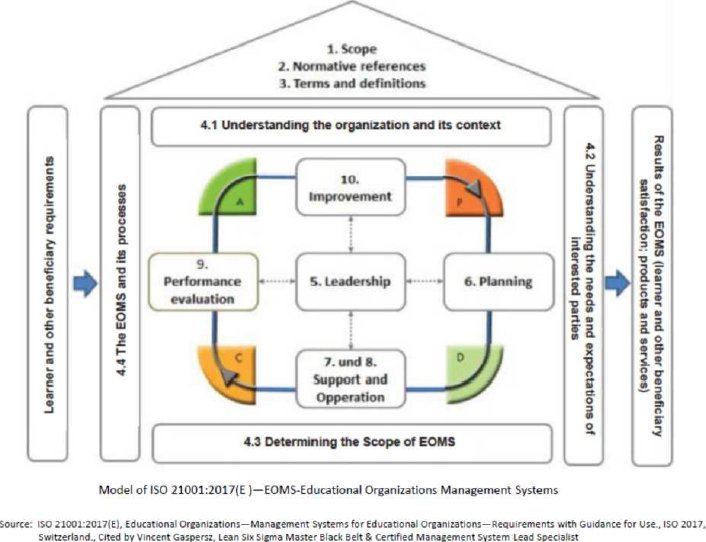

ISO 21001:2017(E) version of Educational Organization Management System
By: Vincent Gaspersz, Lean Six Sigma Master Black Belt & Certified Management System Lead Specialist
- APICS (www.apics.org) Certified Fellow in Production and Inventory Management (CFPIM) and Certified Supply Chain Professional (CSCP);
- International Quality Federation (www.iqf.org) Six Sigma Master Black Belt (SSMBB);
- ASQ (www.asq.org) Certified Manager of Quality/Organizational Excellence (CMQ/OE), Certified Quality Engineer (CQE), Certified Quality Auditor (CQA), Certified Six Sigma Black Belt (CSSBB), Certified Quality Improvement Associate (CQIA);
- Registration Accreditation Board (www.exemplarglobal.org) Certified Management System Lead Specialist (CMSLS).
- Senior Member of American Society for Quality (Member #: 00749775), International Member of American Production and Inventory Control Society (Member #: 1023620), and Senior Member of Institute of Industrial and Systems Engineers (Member #: 880194630).
To date, for a management of educational organization that wants to obtain international certification from ISO, its reference is ISO 9001 Quality Management System. The difficulty when the educational organization refers to ISO 9001 is that the management of that educational organization must adjust through some modifications because, in reality, that ISO 9001 Quality Management System has more to do with business organizations and industries – both manufacturing and service industries.
Facing the specific needs of educational organizations that have different management system with business and industry organizations, then ISO institution, since 2013, has begun to consider organizing the Educational Organization Management System which has been approved to be officially published by the end of 2017 or early 2018. ISO has issued it under the name ISO 21001:2017(E) — Educational organizations — Management systems for educational organizations — Requirements with guidance for use.
Overview of ISO Institution
ISO is the International Organization for Standardization based in Geneva, Switzerland. ISO has membership of 165 countries, and is the world’s second largest organization after the United Nations which consists of 193 member countries in the world. ISO was established on February 23, 1947, as an independent non-governmental organization to promote worldwide patents primarily related to industry and commercial business standards. Until now ISO has published about 21,350 international standards with an average of 100 new standards issued each month. ISO works with its Technical Committee and currently there are 238 Technical Committees (TC/ISO) consisting of more than 100,000 experts worldwide.
ISO 21001: 2017 on Educational Organization Management System prepared by ISO Technical Committee 288 consisting of 93 experts from various education sectors from 32 countries that each has national standardization body.
More information about ISO can be seen on the following website:
https://www.iso.org/home.html
ISO 21001:2017(E)
The scope of ISO 21001:2017 can be applied to all Educational organizations that provide education from early childhood to post-doctoral, including Vocational Education and Training, and distance learning.
ISO 21001:2017 adopts High Level Structure, like ISO 9001:2015, which is a management system that is compiled based on the following 10 clauses.
High Level Structure
- Scope
- Normative references
- Terms and definitions
- Context of the organization
- Leadership
- Planning
- Support
- Operation
- Performance evaluation
- Improvement
The benefits of ISO 21001:2017 application are mainly for (1) Learners; (2) All types of educational organizations (public, private, self-sufficient, non-profit); and (3) Interested parties and stakeholders (teachers, parents, government, NGOs, unions, etc.). ISO 21001 provides guidance to create a comprehensive integrated management system based on SUCCESSFUL practices that are available to all educational organizations worldwide.
In addition, some of the following will be obtained when the management of Educational organization adopts and implements ISO 21001:2017(E), namely:
- Aligning better objectives and activities with the educational organization’s policy;
- Increasing social responsibility by providing inclusive and equitable quality education that benefits all and follows international standards;
- Providing more personalized learning and more effective response to all learners, especially to the students with specific educational needs and to the distance learners;
- Having consistent process and evaluation tool to demonstrate the management’s concern in improving the effectiveness and efficiency of education;
- Enhancing the credibility of the organization;
- Making a means that enables educational organization to demonstrate their commitment to effective quality management practices;
- Cultivating for continuous improvement of educational organization;
- Harmonizing regional, national, and other standards contained within a framework of international standards;
- Expanding the participation of various stakeholders; and
- Stimulating excellence and innovation practices in the Education sector.
Educational Organization Management System Model of ISO 21001:2017
The ISO 21001:2017 management system model is shown in Chart 2 below, while the various stakeholders associated with this ISO 21001:2017 are shown in Chart 3 below.
The Complete Structure of ISO 21001:2017 is as follows:
Introduction
- Introduction
- General
- Relevance
- Relationship between ISO 21001 and other ISO Standards
- Principles for a Management System for Educational Organizations
- Process Approach
- General
- Plan-Do-Check-Act Cycle
- Risk-based thinking
- Organization Mission, Vision and Strategy
- Scope
- Normative references
- Terms and definitions
- Context of the Organization
- Understanding the organization and its context
- Understanding the needs and expectations of interested parties
- Determining the scope of EOMS (Educational Organization Management
System) - The EOMS and its processes
- Leadership
- Leadership and commitment
- General
- Focus on Learners and Other Beneficiaries
- Policy
- Developing the organization’s policy
- Communicating the organization’s policy
- Organization roles, responsibilities and authorities
- Leadership and commitment
- Planning
- Actions to address risks and opportunities
- Educational organization’s objectives and planning to achieve them
- Planning of changes
- Support
- Resources
- General
- Human Resources
- Facilities
- Environment for the operation of educational processes
- Monitoring and measuring resources
- Organizational knowledge
- Competence
- Awareness
- Communication
- General
- Communication purposes
- Communication arrangements
- Documented information
- General
- Creating and updating
- Control of documented information
- Resources
- Operation
- Operational Planning and Control
- Requirements for Products and Services
- Determination of requirements for products and services
- Changes to requirements for products and services
- Design and Development of Products and Services
- General
- Design and development planning
- Design and development inputs
- Design and development controls
- Review of the requirements for products and services
- Design and development outputs
- Design and development changes
- Implementation
- Preparing for service provision
- Release of products and services
- Control of changes
- Service Provision
- General
- Admission of learners
- Delivery of programmes
- Summative assessment
- Recognition of assessed learning
- Control of Externally Provided Processes, Products and Services
- General
- Type and Extent of Control of External Provision
- Information for External Providers
- Traceability and Preservation
- Traceability
- Preservation
- Protection and Transparency of Learners’ Data
- Property Belonging to Interested Parties
- Performance Evaluation
- Monitoring, Measurement, Analysis and Evaluation
- General
- Satisfaction of learners, other beneficiaries and staff
- Analysis and evaluation
- Monitoring and measuring needs
- Methods for monitoring, measurement, analysis and evaluation
- Internal Audit
- Management Review
- General
- Management review inputs
- Management review outputs
- Monitoring, Measurement, Analysis and Evaluation
- Improvement
- General
- Nonconformity and Corrective Action
- Continual Improvement
- Annex A (normative) Additional Requirements for Special Needs Education
- General
- Additional Requirements to Clauses
- Additional requirements to 5.1.1 Leadership and commitment—general
- Additional requirements to 7.2 Competence
- Additional note to 8.2.1 Determination of requirements for products and services
- Additional requirements to 8.5.3 Delivery of programmes
- Additional requirements to 9.1.5 Methods for monitoring measurement,
analysis and evaluation
- Annex B (normative) Additional Requirements for Research
- Introduction
- Examples of Research Involvement of Educational Organization Interested
Parties - Provision of Research Principles and Guidelines
- Provision of Information Regarding Research Processes
- Training and Consultation
- Annex C (normative) Additional Requirements for Early Childhood Education
- General
- Facilities
- Competence
- Communication
- Individual Learning Plans
- Reception and Delivery of the Child
- Reception of the child
- Delivery of the child
- Hygiene Care
- Care in Situation of Illness or Accident
- Pedagogical-Playful Materials, Equipment and Spaces
- Annex D (informative) Principles for a Management System for Educational Organizations (EOMS)
- A Focus on the Needs of Learners and Other Beneficiaries
- Learning-Centeredness
- Visionary Leadership
- Engagement of People
- Process Approach
- Improvement
- Evidence-Based Decisions
- Relationship Management
- Social Responsibility
- Accessibility and Equity
- Ethical Conduct in Education
- Data Security & Protection
- Holistic Approach
- Adaptability
- Extensibility
- Annex E (informative) Classification of Interested Parties
- Interested Parties for an EOMS
- Annex F (informative) Guidelines for Communication with Interested Parties
- Levels of Engagement
- Methods of Engagement & Communications
- Communications for the purpose of obtaining the position, opinion or consent of interested parties
- Communications for the purpose of conveying relevant, accurate and timely information to interested parties
- Frequency of Communication with Interested Parties
- Receipt and Handling Feedback from Interested Parties
- Review of Impact of Feedback from Interested Parties on the Management
System
- Annex G (informative) Processes, Procedures, Methods and Tools in Educational Organizations
- Processes
- Measures
- Tools
Bibliography
Various world-class standards have been developed and are widespread; it requires only the COMMITMENT of the management of educational organizations to adopt and implement best practices in accordance with international standards for making world-class educational organizations in order to enhance their graduates’ competitiveness in the global labor market. The 21st century literacy on education is to Think Globally and Act Locally — Glocality.
References:
- ISO. 2017., ISO 21001:2017(E): Educational organizations — Management systems for educational organizations — Requirements with guidance for use, Geneva, Switzerland.
https://www.iso.org/home.html - Knowledge Innovation Centre: www.knowledgeinnovation.eu


